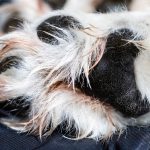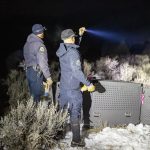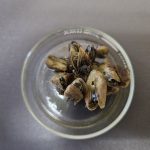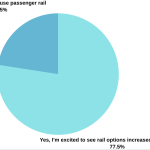Colorado to review its relocation procedures as it eyes second batch of wolves from British Columbia, while producers ask for a pause
After one-third of the British Columbia wolves had died, Parks and Wildlife will see if its release procedures impacted survival
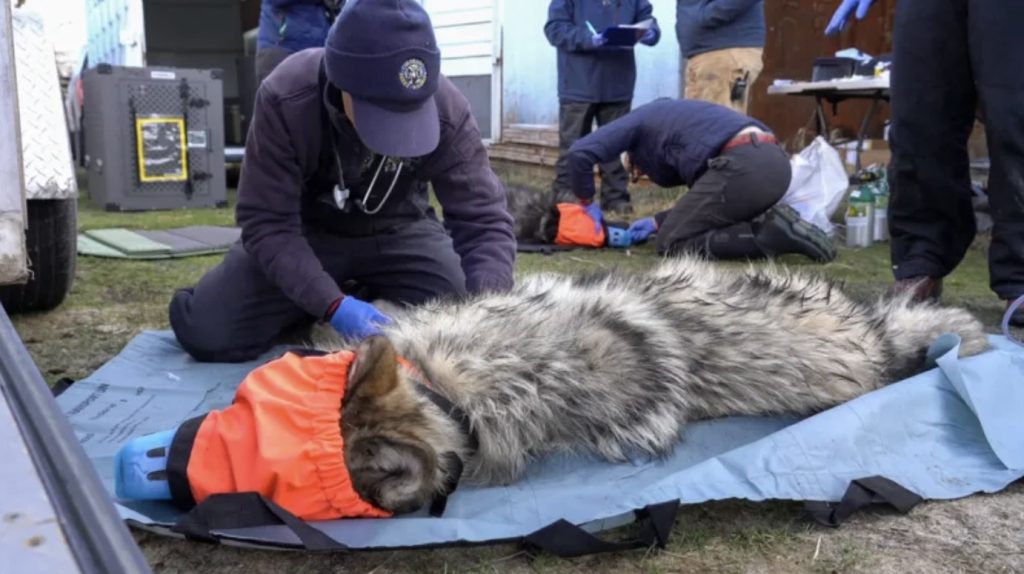
Colorado Parks and Wildlife/Courtesy Photo
Since January, five of the 15 gray wolves brought to Colorado from British Columbia have died. As Colorado Parks and Wildlife renews discussions with the Canadian province to obtain more wolves, it will also be taking a look at whether changes to its translocation procedures could increase their survival.
“Out of an abundance of caution, CPW will assess the mortalities of wolves translocated in 2025 to determine if any translocation protocols should be modified,” said Reid Dewalt, Parks and Wildlife’s deputy director, at a legislative hearing on Monday before Colorado’s Water Resources and Agriculture Review Committee.
Dewalt confirmed during the meeting that Parks and Wildlife has renewed discussions with the B.C. Ministry of Water, Lands and Resource Stewardship to extend its contract for another batch of wolves. Last year’s agreement between Colorado’s wildlife agency and the Canadian ministry allowed for the transfer of 15 wolves in 2025.
“We believe that those animals have been pretty good performers on our landscape to date,” said Jeff Davis, director of Parks and Wildlife.
One of the factors that led Parks and Wildlife to British Columbia as a source was that the wolves there have never interacted with livestock.
“We learned from the Oregon situation. We heard from the producers: ‘Find us animals that have either been hunted or have never had any history with livestock,'” Davis said. “There’s been very few livestock depredations from the B.C. animals.”
However, a third of the wolves have died.
Two of them were killed after traveling to Wyoming, where federal and state protections are different. The three other deaths have taken place in Colorado and are currently being investigated by the U.S. Fish and Wildlife Service because wolves are federally listed as endangered in the state.
Colorado’s wolf management plan stipulates that if wolf survival drops below 70% six months after release it will trigger a protocol review of the translocation process. While Parks and Wildlife officials have maintained on repeated occasions that the level of mortality so far has been within expectations, the agency will now be reviewing this process, according to Dewalt’s testimony Monday.
“The problem is that this cannot occur until final determinations from the U.S. Fish and Wildlife Service necropsies have been made on the cause of those mortalities, and we have not received those reports yet,” Dewalt said.
The translocation review is something the agency is borrowing from its reintroduction of the Canadian Lynx in Colorado. In the 1990s, Parks and Wildlife reintroduced the cat species in the San Juan Mountains, bringing animals from Alaska and Canada. During that reintroduction, the agency reviewed its translocation policies to see if it could increase the survival rate of lynx post-release.
As a result of the review, Dewalt said the the agency switched from a “hard release” for the lynx — where the animals are transported to Colorado and immediately released into the wild — to a “soft release” — where the lynx were held in short-term captivity to improve their body condition before being released.
Per the recommendation of the wolf plan, Parks and Wildlife has been using a hard release method for wolves.
“This is not to suggest that the cause of wolf mortalities is the same as lynx, or that the same solutions, such as a soft release, would be appropriate for wolves,” Dewalt said.
Pause on paws?
As Parks and Wildlife continues negotiations with British Columbia, the recent escalation of livestock losses in Piktin County with the Copper Creek Pack has renewed calls for Colorado to pause its reintroduction. In the fall, producers requested a pause in a petition — later denied by the Parks and Wildlife commission — which requested seven items, primarily for reducing conflict between wolves and livestock, be fully implemented before more wolves were released.
“I think the entire reintroduction restoration is at risk when we can’t get our legs underneath us and be in a position to do this the way we need to,” said House Speaker Julie McCluskie, a Dillon Democrat.
McCluskie’s comments followed requests at the hearing from producers and local elected officials on the Western Slope who want to see better data on wolf locations and more comprehensive conflict minimization programs before any more wolves are released.
When asked to clarify whether the agency was considering not bringing in more wolves this winter, Davis said, “I didn’t say that it was not on the table or for sure happening,” and that the agency’s commission will likely be facing that question soon.
“The plan says we’re going to relocate 30 to 50 (wolves) in a three- to five-year window,” Davis said. “That’s really important for just a base foundation population, but more important(ly) for genetic diversity.”
So far, the agency has introduced 25 wolves in two years.
Davis told the lawmakers he didn’t know “whether or not a pause was the right thing to do” or if it would be better to “get the last 15 out and move on to the management piece.”
“It seems like every time we release, it gets more complicated … it’s more emotional and difficult for us to pull off that operation,” he said. “And I think it’s also challenging for the producers at the same time.”
Colorado voters may be asked to stop wolf reintroduction altogether as the petitioners collect signatures to place a measure on the November 2026 ballot.

Support Local Journalism

Support Local Journalism
The Sky-Hi News strives to deliver powerful stories that spark emotion and focus on the place we live.
Over the past year, contributions from readers like you helped to fund some of our most important reporting, including coverage of the East Troublesome Fire.
If you value local journalism, consider making a contribution to our newsroom in support of the work we do.


